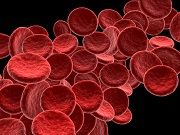Article
New, Cheap Method for Examining Individual Leukemia Cells Paves Way for Future Treatments
Author(s):
Researchers found a low-cost approach to examine individual cancer cells, which could lead to a breakthrough in treatments.

Researchers have found a cheaper way to examine individual leukemia cells in patients with chronic lymphocytic leukemia (CLL), which could improve treatment options in the future.
The findings, published in Nature Communications, are of particular importance since the research team found that the leukemia tumors were comprised of cells with entirely different gene expressions.
“We found that CLL cells do not consist of a single cell type, but of a number of sub-clones that exhibit entirely different gene expression,” said researcher Joakim Lundeberg.
Although RNA sequencing methods can provide information about what RNA molecules are present in a biological sample, they are unable to identify the cells in which the genetic activity is taking place.
“With this new, high cost-effective technology, we can now get a whole new view of this complexity within the blood cancer sample,” Lundeberg said. “Molecular resolution of single cells is likely to become a more widely-used therapy option.”
This method provides an analysis of all mRNA molecules in individual cells by binding a location tag to the molecules, according to Lundeberg.
After the individual cells are sorted on a specially-made glass surface, researchers used the analysis of RNA molecules with next-generation sequencing to identify which genes are active. The spatial information on the glass surface reveals which cell a specific RNA molecule is to be found in, according to the study.
“We have also developed an open, available software which combines images of individual cells with information from the sequencing, that is, which genes are expressed and at what level,” Lundeberg said. “With the new method, and the software, we can study thousands of cells in a day.”






